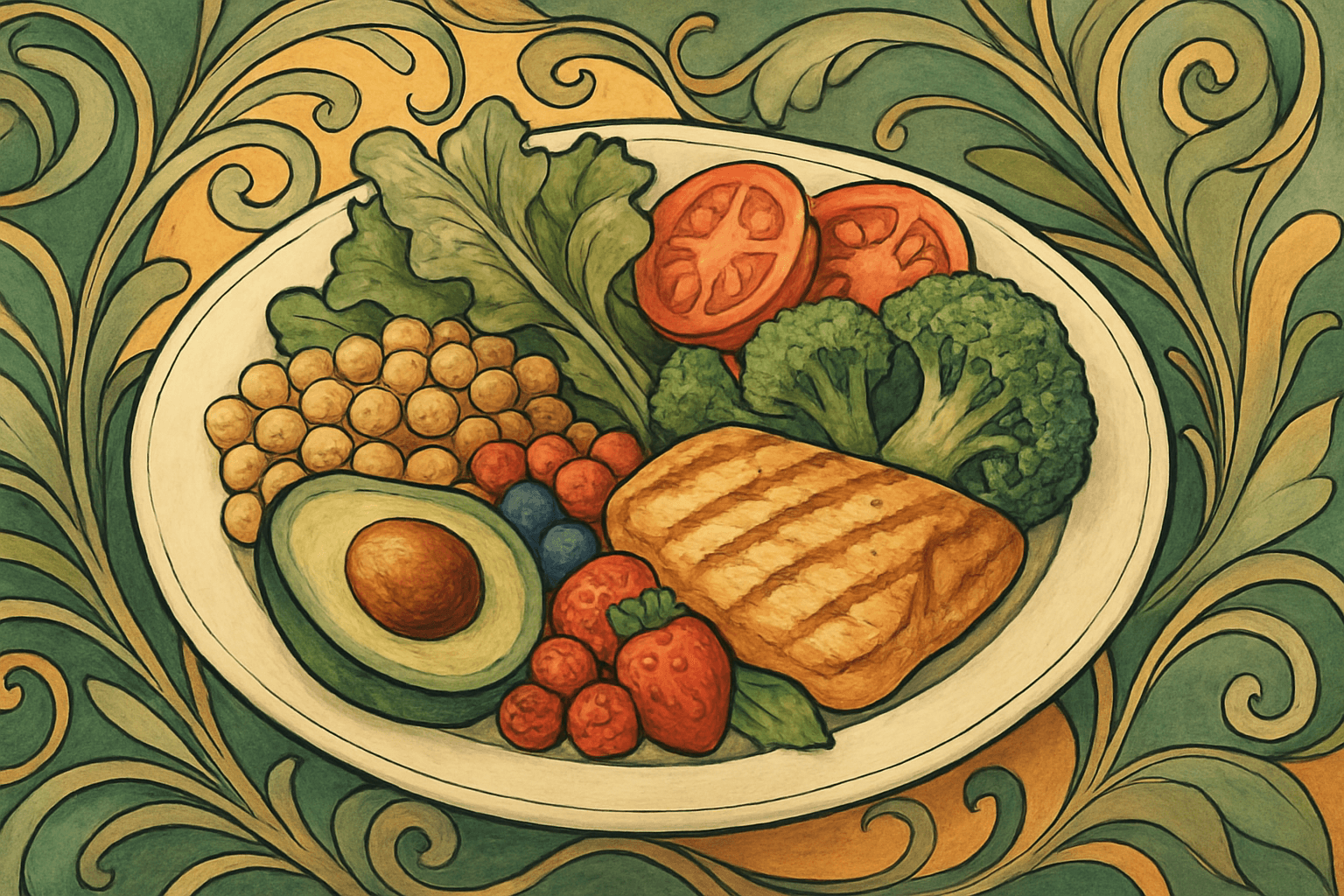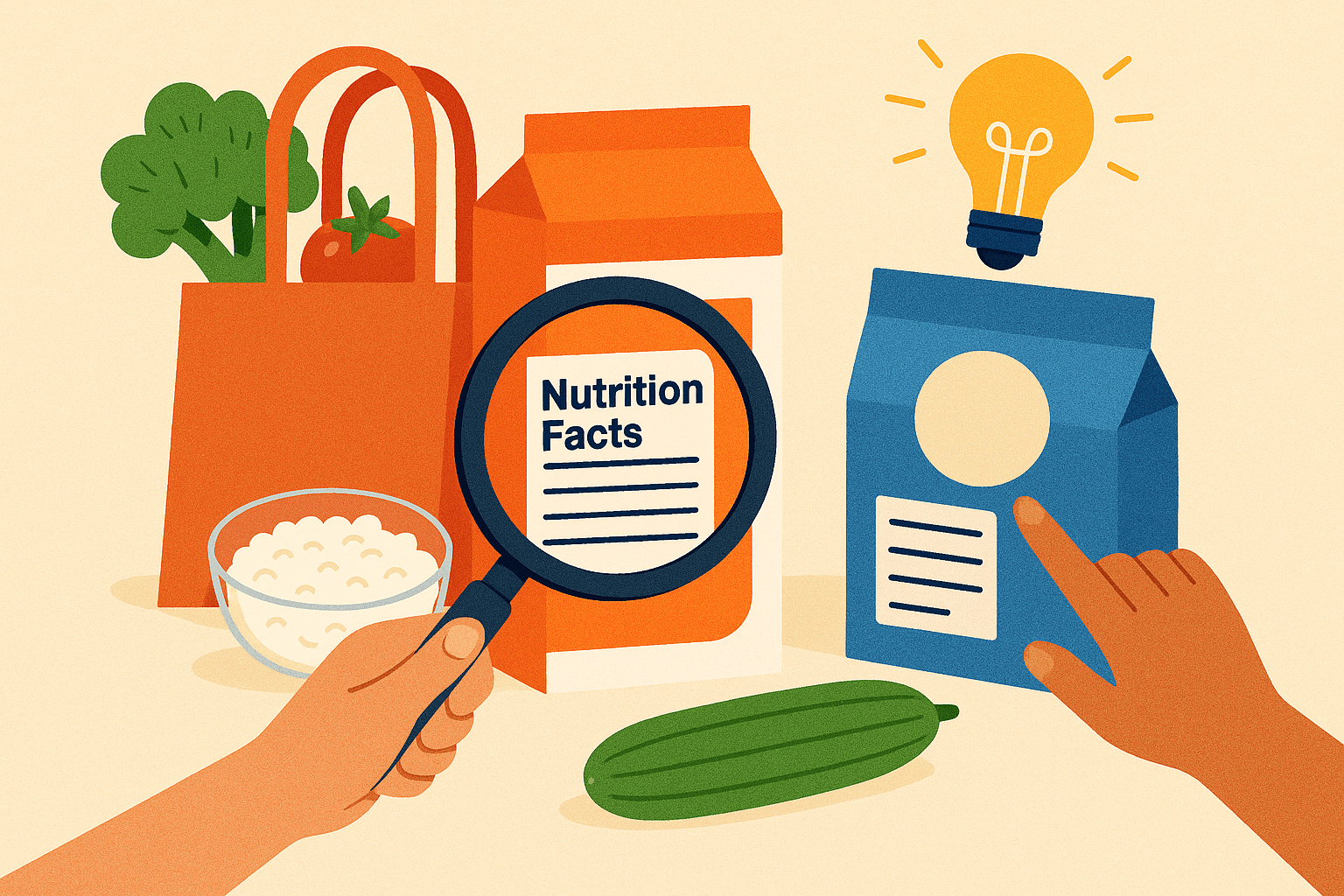The Science of Smart Eating: How to Build a Truly Healthy Diet That Lasts
Published on June 17, 2025

Let’s Get Real About Nutrition
Forget fad diets and fleeting trends — true healthy eating isn’t about strict rules. It’s about understanding your body, feeding it what it truly needs, and making food choices that you can maintain for a lifetime.
What Is ‘Healthy Eating,’ Anyway?
Healthy eating is not just salads and smoothies. It’s a way of living that:
Feeds your body essential nutrients
Boosts your metabolism, digestion, and brain
Prevents disease — instead of promoting it
Can be sustained for life
Brings joy, not stress
It includes:
Whole foods, as close to their natural form as possible
Balanced meals with protein, fiber, and healthy fats
Fresh, colorful produce
Consistent mealtimes
Flexibility over perfection
Cultural variety and seasonal inspiration
Meals that support your lifestyle, not control it
Calorie Counting vs. Nutrient Density
Calories matter, but nutrients matter more.
Choose foods packed with vitamins, minerals, and antioxidants:
Leafy greens
Fatty fish
Berries
Lentils
Nuts and seeds
Eggs
Fermented foods
Avoid “low-cal” processed snacks that leave you depleted and craving more.
Your body wants nourishment, not numbers.
Mindset shift: Eat to fuel, not to punish.
Bonus tip: Home-cooked meals are richer in nutrients and lighter in hidden sugar/fat.
Restock your kitchen with real-food staples:
Olive oil
Spices
Oats
Canned legumes
The Blood Sugar Connection
Stable blood sugar = better energy, mood, and brain function.
For stability:
Eat vegetables or protein first
Always pair carbs with fiber and fat
Avoid sugary drinks and ultra-processed foods
Take short walks after meals
Stick to consistent mealtimes
Don’t skip meals
Even your brain — a glucose guzzler — craves blood sugar balance.
Yes, you can still enjoy fruit — pair it with nuts or yogurt.
Craving dessert? Go for a square of dark chocolate.
The Perfect Plate Blueprint
A simple guide for most meals:
1/2 plate: non-starchy vegetables (greens, zucchini, broccoli, peppers)
1/4 plate: protein (chicken, tofu, eggs, beans, fish)
1/4 plate: smart carbs (quinoa, sweet potato) and healthy fats (avocado, olive oil)
This formula supports energy, satiety, and metabolism.
Plate hack: Use smaller plates, taller glasses, and vibrant foods to naturally guide portion size.
Prep once, mix often: Cook grains and proteins in bulk for easy assembly.
Gut Health Is Everything
You’re feeding your gut microbiome — not just yourself.
Gut health supports:
Digestion
Immunity
Weight balance
Mood and cognition
To nourish your gut:
Eat fiber (plants, beans, nuts, seeds)
Include fermented foods (yogurt, kefir, sauerkraut)
Add prebiotics (onion, garlic, oats, asparagus)
Prioritize variety: eat the rainbow
Bonus tip: Rotate fruits and veggies weekly
Slow down: Chew thoughtfully for 5 minutes — it makes a big difference
The Unsung Hero: Hydration
Water is not filler — it’s functional.
Daily target: 30–40 ml per kg of body weight
Hydration tips:
Sip all day
Add lemon, cucumber, or mint for flavor
Drink a glass before meals
Limit sugary or overly caffeinated drinks
Try herbal teas (ginger, peppermint, rooibos) for added benefits
Start and end your day with water as a ritual
Even slight dehydration can lead to cravings and fatigue.
Want to Live Longer? Science Says:
Habits matter more than hacks. Research-backed advice:
Eat mostly plants — and colorful ones
Use olive oil, eat nuts and fish often
Avoid sugar, white flour, and processed meat
Practice mindful eating — no screens
Fast overnight (12–14 hours) occasionally
Mediterranean-style diets consistently show benefits:
Lower heart disease and diabetes risk
Better brain health
Healthy weight maintenance
Diverse and thriving gut microbiome
Social tip: Share meals when possible — connection is nourishment too.
Why Diets Fail and Habits Win
Most diets crash because they’re restrictive and unrealistic.
Instead:
Take small steps
Cook more at home
Build meals around foods you enjoy
Embrace indulgence occasionally — it’s part of balance
Rely on routines, not willpower
Choose progress over perfection
Think in seasons, not sprints
The best eating plan? The one you can actually stick with.
Start Here: 5 Small Changes
Add a vegetable to every meal
Eat protein at breakfast
Swap soda for tea or sparkling water
Use smaller plates
Always sit while eating — no multitasking
These tiny tweaks stack up fast.
Bonus habit: Keep a “meal wins” list — a log of foods and routines that make you feel great.
If you slip? Reset at the next bite — not next Monday.
Save your go-to meals in your phone for quick recall.
Final Thought
Healthy eating isn’t about guilt — it’s about restoration.
It’s about feeling good, thinking clearly, moving freely, and living well.
Forget perfection. Focus on patterns.
Nourish. Repeat. Enjoy.
Your healthiest life is more than what’s in your fridge — it’s in your rhythm, your attitude, and your relationship with food.
You don’t have to be perfect. You just have to show up.
Health is not a finish line — it’s a rhythm. Learn to dance with it.








